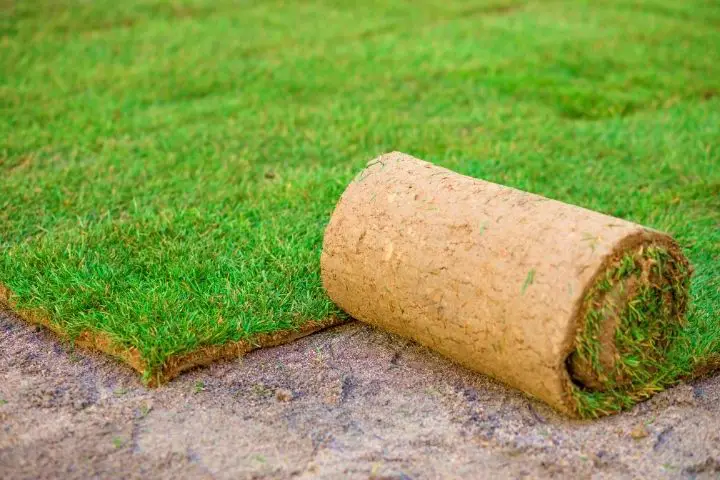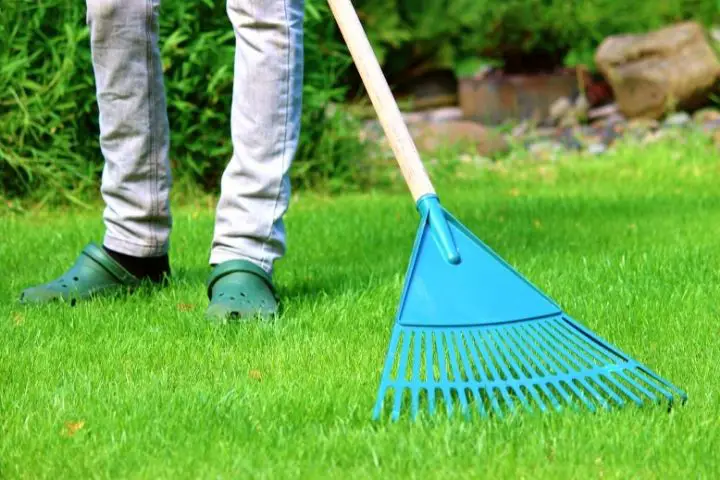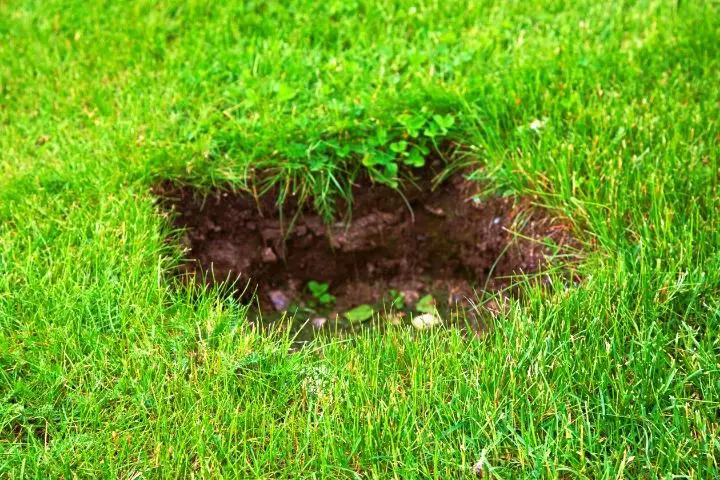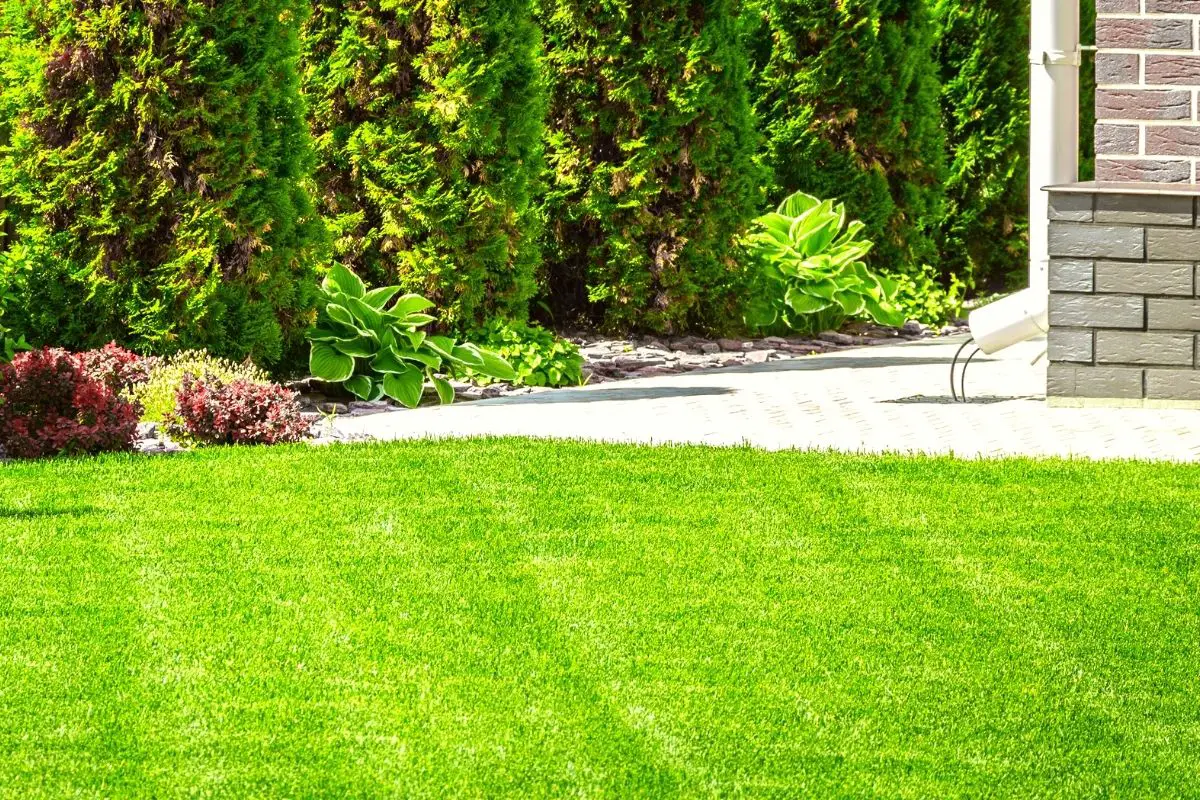What Type of Sand To Level a Lawn (+ How To Do It!)
Perfectly flat, even lawns do not appear out of nowhere. It takes a lot of preparation and ongoing maintenance to keep a lawn level so children can play and furniture can stand upright!
While there are many reasons a lawn becomes uneven, they all come down to soil displacement. So the best way to remedy a bumpy lawn is by replacing the lost soil.
Sand is a key component of healthy soil and can be used when leveling a lawn by hand. However, you should read on before attempting to level your lawn with pure sand!
What Is Sand Leveling And Topdressing?
One of the greatest ecological benefits of planting a ground cover like turfgrass is that it helps keep the topsoil in place. But even a thick blanket of grass can’t prevent all settling, erosion, and other damage from marring the surface of your lawn.
Leveling a lawn can be done in a number of ways, the least invasive of which is called topdressing. Topdressing involves spreading a very thin layer of soil over the existing lawn — grass and all — to level out small bumps and valleys.
Sand is an extremely popular choice for topdressing. However, pure sand should pretty much never be used for leveling a residential lawn.

Instead, the recommended leveling mixture consists of:
- 50-percent sand
- 50-percent dry potting soil
Or:
- 40-percent sand
- 40-percent dry potting soil
- 20-percent aged compost
Think of it this way: Anything you topdress your lawn with will eventually become part of the base soil composition. Topdressing with sand alone will change the balance of your lawn’s native soil.
While sand isn’t inherently bad for turfgrass, too much sand will interfere with water and nutrient retention.
How To Level Lawn With Sand
Again, you probably shouldn’t level your lawn using sand alone. But leveling a lawn using a mixture of sand, potting soil, and/or compost is a surprisingly simple way to repair damage from erosion, foot traffic, and general settling.
There are two main approaches to leveling low sections of lawn:
Topdressing

Topdressing is the best way to level out a lawn that has a generally uneven surface. It’s a relatively quick and easy process — you can topdress the average lawn in an afternoon. All you need is a wheelbarrow to mix and transport your sand mixture, plus a sturdy rake or hoe for actually spreading the material.
However, you should not spread the sand mixture more than ½-inch thick at a time. You should always be able to see the grass blades poking through the topdressing. So it may take several applications over the course of a summer to even out a particularly bumpy lawn.
Underfilling
To level a lawn with sunken areas more than 1-inch below the rest of the ground, you can employ a strategy called underfilling.
Underfilling utilizes the same sand mixture as topdressing. But you will not be spreading the soil over the top of the grass!
Instead, underfilling involves lifting the sod away from the affected area to reveal the bare soil below. You can then add the mixed sand until the area is flush with the rest of the lawn (some sources recommend piling the soil slightly above the rest of the lawn as it will settle over time). Replace the lifted sod and water the area to help everything settle into place.
Can You Use Sand To Fix Holes In A Lawn?

Yes, you can use a similar process to repair large holes or ruts in your lawn. Just fill the damaged area until it is flush with the surrounding ground.
Complete this step before topdressing the rest of the lawn. Or, if only a few spots need attention, use extra topdressing sand to blend the patched area into the rest of the soil.
While topdressing can be done with or without reseeding as well, this isn’t true for filling sizable holes. You’ll need to reseed the patched areas for a consistent final product.
Even when fixing small holes, you should still use a mixture of sand and potting soil instead of pure sand. Using sand alone will make it hard for the new grass seed to put down strong roots and keep up with the existing turf around it.
Frequently Asked Questions
What Sand Should I Use To Level My Lawn?
Most homeowners reach for masonry sand or play sand when topdressing their lawns. These sands have fine, consistent particles and are thoroughly sifted to remove pebbles and other debris.
Although masonry sand and play sand are very similar in composition, sourcing these materials can be quite different.
Masonry sand tends to be the best option for large topdressing projects as it can be ordered by the truck. Meanwhile, play sand can easily be bought in bags for filling holes or treating small recesses.
By weight, masonry sand tends to be much more economical than play sand. However, if you feel it is time for disposing of old sandbox sand, soil leveling could be a good project for it.
How Much Sand Do I Need To Level My Lawn?

You can estimate the amount of sand you’ll need for your yard with a bit of (relatively) simple math.
Measure the length and width of the area to be covered, plus the thickness the final layer needs to be. Multiply these three measurements to get the rough volume of leveling material needed. Don’t forget to account for any holes or ruts you plan to fill as well.
If you will be mixing the sand with potting soil and/or compost before spreading, divide the total volume accordingly to find out how much sand you’ll need.
When topdressing a lawn, the thickness should be no more than ¼- to ½-inch. Take this into consideration when calculating the amount of sand needed for your specific leveling project.
When Should You Level Your Lawn With Sand?
Since the entire point of leveling with sand or soil is for the grass to grow through the new material, you should only topdress your lawn when the grass is at its most active. For this reason, mid to late spring tends to be the best time for applying sand.






